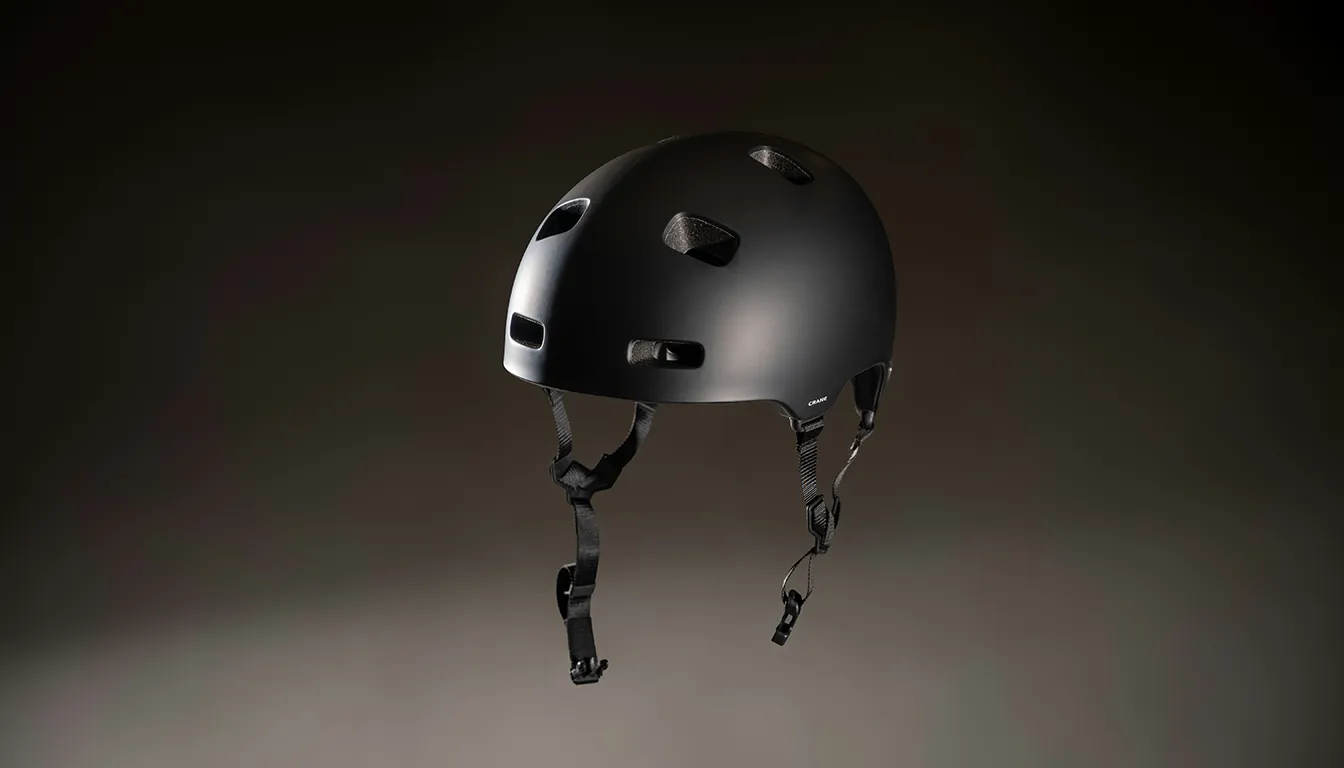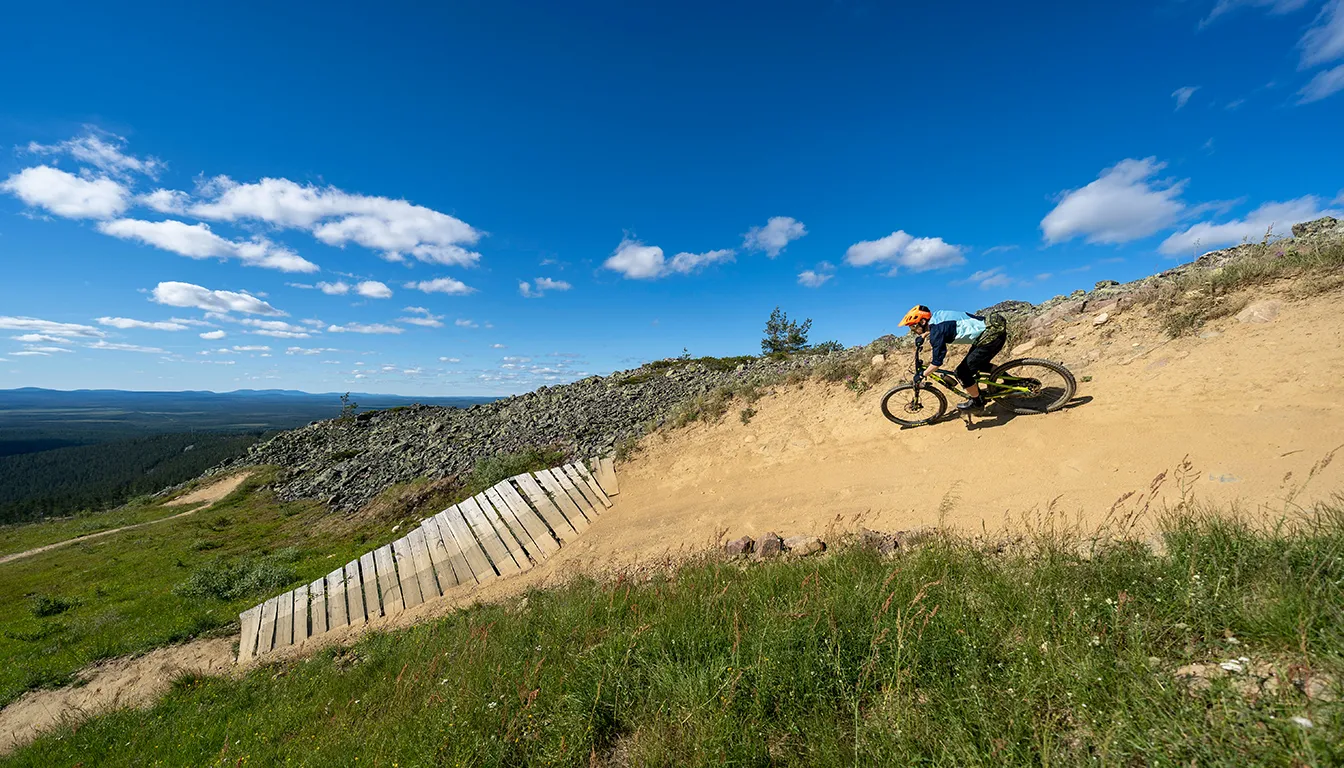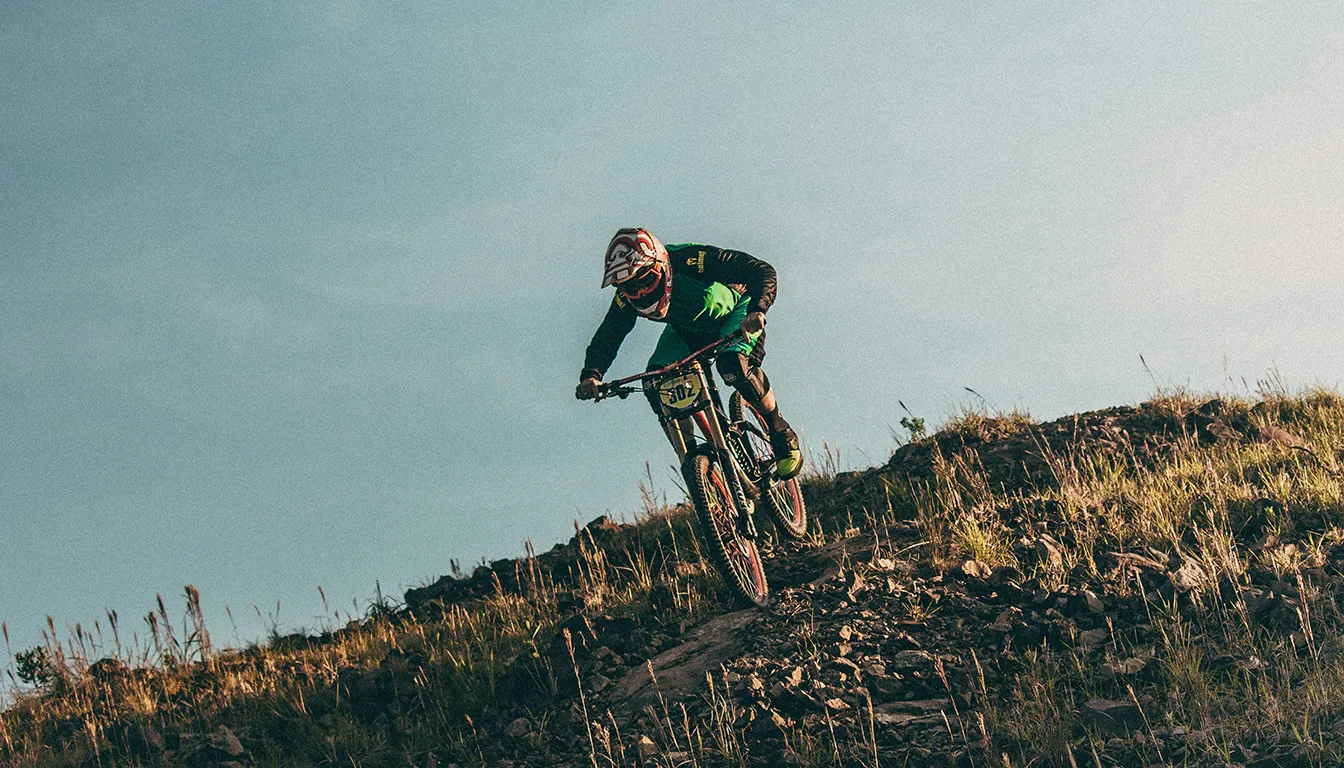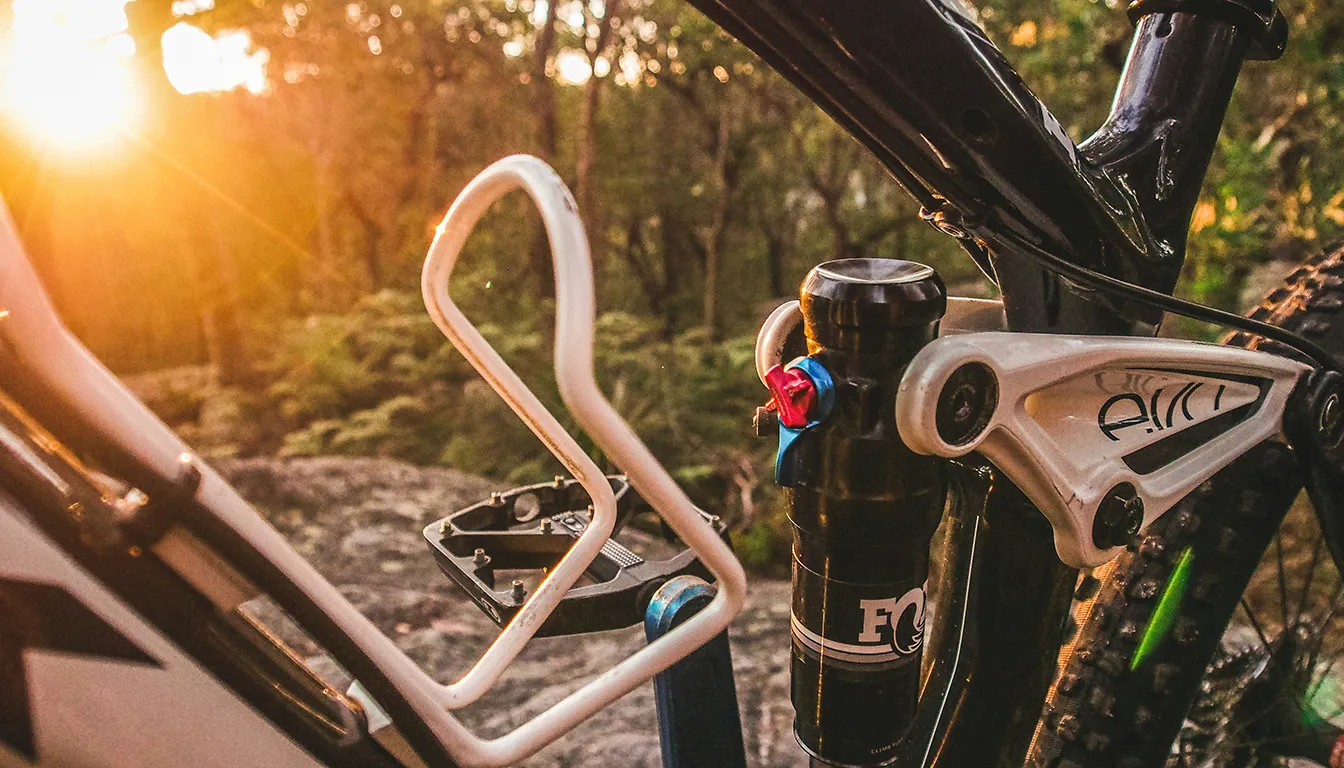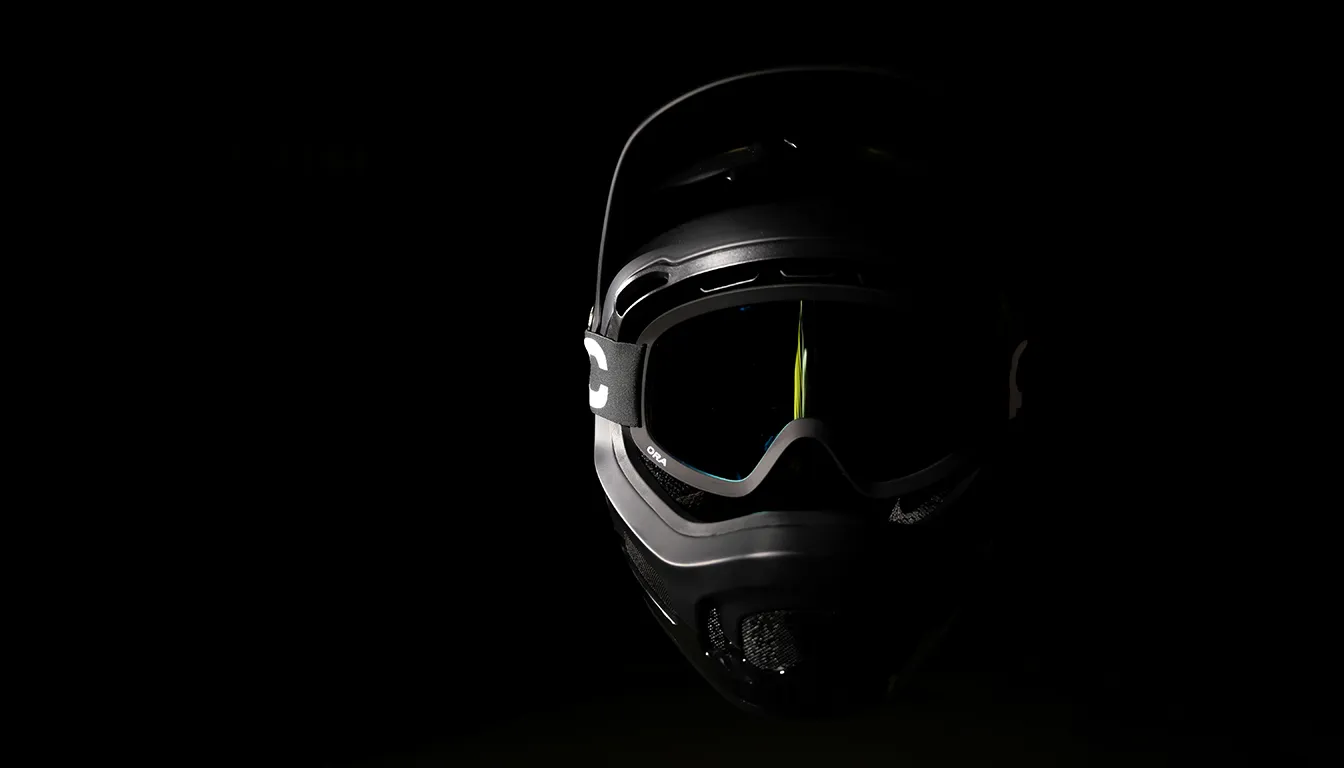Mountain biking is a thrilling activity that needs more than a strong bike. Right mountain biking gear is crucial for your safety, comfort, and best performance. Whether you’re experienced or new, knowing what essential mountain biking equipment to have is key. We’ll look at vital gear every mountain biker needs. This includes mountain biking safety equipment such as helmets and protective wear, as well as practical items like good bikes and the right clothes.
Riders should also think about tools for navigation, ways to communicate, and extra accessories that make biking better. Choosing the correct gear makes your biking better and prepares you for any trouble. Things like protective glasses, clothes for all weathers, and ways to stay hydrated are all important. For more tips on what gear and clothes to choose, check out this detailed guide.
The Importance of Safety Gear for Mountain Biking
Safety is key in mountain biking. Riders tackle challenging terrains that pose many risks. This is why mountain biking safety gear is vital. A good helmet is crucial for protecting against head injuries from falls or collisions. It’s not just a good idea to have one, but often it’s the law in many places. Helmets vary in price, from £20 to £160, allowing riders to find one within their budget.
Why a Quality Helmet Is Essential
A top-notch helmet greatly improves safety. Helmets with MIPS (Multi-directional Impact Protection System) offer better protection during a crash. Depending on their biking style, riders choose their helmets. For example, cross-country riders might pick half-shell helmets, while those into downhill might go for full-face helmets. This shows how varied mountain biking needs are.
Additional Protective Equipment to Consider
There’s more to safety gear than just helmets in mountain biking.
- Padded gloves help with grip and absorb shock, making for a smoother ride.
- Knee and elbow pads lessen injury risks from falls.
- Eye protection is essential against flying debris and branches.
- Bright lights, particularly those claiming at least 1,500 lumens, improve visibility. This is especially true with a combination of bar and helmet lights.
Carrying a puncture repair kit, spare tube, and pump is wise to avoid being stranded. A first-aid kit with bandages, antiseptic cream, and pain relief is advisable for emergencies. The wide range of mountain biking safety gear shows a strong commitment to keeping riders safe. It reflects the sport’s ongoing development.
Must-Have Functional Gear for Mountain Biking
Choosing the right gear is key for a great mountain biking experience. The correct bike can improve your performance. Likewise, the right clothes ensure comfort and safety on the trails.
Choosing the Right Mountain Bike
When shopping for mountain bikes, think about the type, frame, and features. Cross-country bikes are light and fast. Downhill bikes offer stability on tough terrains. Picking a bike that suits your style makes biking more fun.
Type of Clothing: Comfort and Performance
Mountain biking clothes do more than cover you up. Go for fabrics that wick away moisture to keep cool. Trousers protect better than shorts from mud and scratches. Full-finger gloves protect hands and improve grip.
A robust backpack is useful for carrying essentials. Don’t forget a well-fitting helmet for head protection. Wear a warm jacket that resists water for sudden weather changes. Good gear makes rides safer and more fun.
Gear for Mountain Biking: The Essential Tools
Having the right tools can make or break your mountain biking adventure. It’s important to carry essential bike tools when you’re on the trails. This section will explore the must-have items like multi-tools, spare inner tubes, repair kits, and pumps. These are crucial for any ride.
Multi-Tools: Your Mechanical Lifesaver
Multi-tools are a must when you’re out biking. They help you fix problems quickly. Look for a multi-tool that has chain tools, screwdrivers, and Allen keys. Choose one that’s tough enough for mountain biking. This little tool can stop a small issue from ruining your day.
Spare Inner Tubes and Repair Kits
Always bring spare inner tubes with you, especially on long rides. They’re vital, even for tubeless bikes. You should carry two just in case. Also, having a good bicycle repair kit is essential. Make sure it includes tyre levers, patches, and basic tools. This way, you’re ready for common trail problems.
Pumps: Hand vs. CO2
You have two choices in pumps for mountain biking: hand pumps or CO2 inflators. Hand pumps are trusty and reusable, perfect for regular riders. CO2 inflators, however, are quick and space-saving but have limited uses. Consider your riding style and needs before choosing one.
| Tool Type | Key Features | Average Price (£) |
|---|---|---|
| Multi-tool | Chain tool, screwdrivers, Allen keys | 20-50 |
| Spare Inner Tubes | Essential for emergencies, fits various tyres | 5-10 |
| Bicycle Repair Kit | Tyre levers, patches, basic tools included | 10-25 |
| Hand Pump | Reliable and durable for frequent use | 15-20 |
| CO2 Inflator | Compact, fast inflation | 10-30 |
Hydration Solutions for Mountain Bikers
Choosing between water bottles and hydration packs is crucial for mountain bikers. Water bottles keep a bike’s balance but need to be reached for. On the other hand, hydration packs, like CamelBak, let bikers drink without stopping. Products such as the EVOC hydration vest, with a 1.5-litre capacity, are great for long rides. They make sure bikers stay hydrated on any terrain.
Benefits of Water Bottles vs. CamelBaks
The Patagonia Dirt Roamer hip pack stands out among hydration packs. It has a 3-litre capacity and lots of space for tools and snacks. Specialized’s SWAT system also impresses by integrating storage on the bike frame. This shows how personal preferences matter in choosing how to carry water and supplies.
Importance of Staying Hydrated
Staying hydrated is key in mountain biking. Drinking at least 500ml of fluid every hour is needed to avoid tiredness and keep performing well. A good hydration strategy considers the ride’s length, the weather, and fitness levels. Those interested in learning more can check out this informative guide. It helps bikers pick the best hydration solutions for their needs.
FAQ
What gear is essential for mountain biking?
For mountain biking, you’ll need a top-quality helmet and protective clothing. Choose a bike that suits your riding style. Don’t forget moisture-wicking clothes, tools like a multi-tool and spare tubes, and a way to carry water.
Why is a quality helmet crucial for mountain biking?
Wearing a high-quality helmet is a must for safety and is often the law. Look for helmets with MIPS technology to get extra protection during falls. This can greatly reduce your risk of getting a serious head injury.
What additional protective equipment should I consider?
Besides a helmet, think about getting padded gloves, knee and elbow pads, and something to protect your eyes. These help prevent injuries and shield you from debris on the trail.
How do I choose the right mountain bike?
To pick the best mountain bike, think about whether you prefer cross-country or downhill riding. Then, choose a bike with the right frame material and features for your activities.
What type of clothing is best for mountain biking?
Wear clothes that wick away moisture to keep you cool and dry. Full-fingered gloves, sturdy riding shorts, and a waterproof jacket are good for better performance and protection.
What tools should I carry while mountain biking?
Always carry a multi-tool with chain tools and screwdrivers, spare inner tubes for tyre issues, and a repair kit for on-the-spot fixes.
What is the best type of pump for mountain biking?
Hand pumps are great for repeated use, while CO2 inflators are compact and fill tyres quickly. However, CO2 inflators are one-time use and may not be practical for long rides.
How can I stay hydrated while mountain biking?
It’s important to drink plenty of water to stay hydrated. Use a stable water bottle or a convenient CamelBak. Aim to drink at least 500ml of water every hour to keep your energy up.
What are the advantages of using a CamelBak over a water bottle?
CamelBaks fit well with your biking gear and make it easier to drink while on the move. They’re especially useful for longer rides and varying weather conditions.
Why is it important to stay hydrated during mountain biking?
Staying hydrated helps fight off fatigue, boosts your performance, and keeps you focused on the trails. With the changing conditions in mountainous areas, hydration is key to enjoying your ride.
